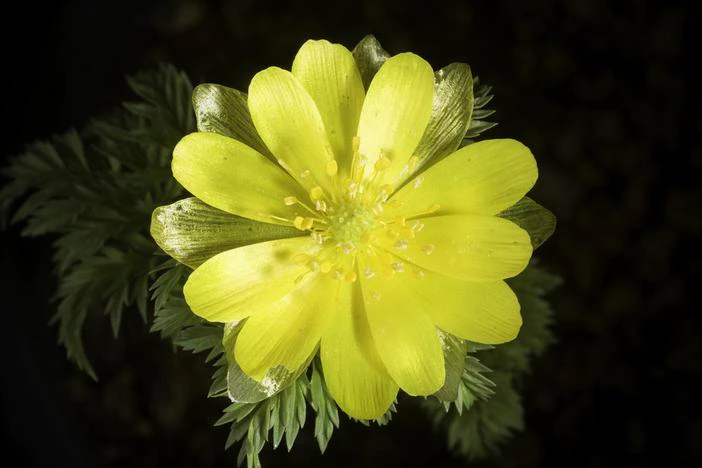Fernleaf Adonis
(Adonis ramosa)
Fernleaf Adonis (Adonis ramosa)
/
/

Motohiro Sunouchi
CC BY 2.0
Image By:
Motohiro Sunouchi
Recorded By:
Copyright:
CC BY 2.0
Copyright Notice:
Photo by: Motohiro Sunouchi | License Type: CC BY 2.0 | License URL: https://creativecommons.org/licenses/by/2.0/ | Uploader: Motohiro Sunouchi | Publisher: Flickr





















Estimated Native Range
Climate Requirements for Arvada, Colorado
| This Plant | Your Site | Plant Suitability for Your Location | ||
|---|---|---|---|---|
| • Precipitation | 45" - 54" | 18" | Your precipitation may be insufficient for this plant. Irrigate N" / year. | Irrigate N" / year |
| • High Temp. | 72°F - 83°F | 88°F | Your summers may be too hot for this plant. | Too hot |
| • Low Temp. | 8°F - 27°F | 17°F | Your winter temperatures are normal for this plant | Excellent |
This plant should grow well at your location with about N inches per year (Y minutes per month) of irrigation.
Summary
Adonis ramosa, commonly known as Fernleaf Adonis or Fringed Pheasant’s Eye, is a deciduous herbaceous plant native to woodland margins and grassy slopes in Eastern Asia, including Japan, China, and Korea. It typically grows at a moderate rate to a height of 0.8-1.5 feet (0.24-0.45 meters) and a width of 0.5-1 feet (0.15-0.3 meters). Fernleaf Adonis features finely dissected leaves that resemble fern fronds, and during the spring, it produces showy, cup-shaped flowers that can be either red or yellow, depending on the variety.
This plant is valued for its early spring blooms and fern-like foliage, which add texture and color to garden beds and borders. It is often used in rock gardens, as part of mixed borders, or in woodland garden settings. Fernleaf Adonis requires well-drained soil, preferably loam or clay, and consistent moisture, though it is somewhat drought-tolerant once established. It thrives in full sun to part shade conditions. While generally low-maintenance, it can be susceptible to root rot if overwatered or planted in poorly drained soils. It is not known to be invasive when grown outside its native range, but gardeners should always monitor and manage their plants responsibly.CC BY-SA 4.0
This plant is valued for its early spring blooms and fern-like foliage, which add texture and color to garden beds and borders. It is often used in rock gardens, as part of mixed borders, or in woodland garden settings. Fernleaf Adonis requires well-drained soil, preferably loam or clay, and consistent moisture, though it is somewhat drought-tolerant once established. It thrives in full sun to part shade conditions. While generally low-maintenance, it can be susceptible to root rot if overwatered or planted in poorly drained soils. It is not known to be invasive when grown outside its native range, but gardeners should always monitor and manage their plants responsibly.CC BY-SA 4.0
Plant Description
- Plant Type: Herb
- Height: 0.8-1.5 feet
- Width: 0.5-1 feet
- Growth Rate: Moderate
- Flower Color: Red, Yellow
- Flowering Season: Spring
- Leaf Retention: Deciduous
Growth Requirements
- Sun: Full Sun, Part Shade
- Water: Medium
- Drainage: Medium
Common Uses
Border Plant, Deer Resistant, Low Maintenance, Rabbit Resistant, Rock Garden
Natural Habitat
Woodland margins and grassy slopes in Eastern Asia
Other Names
Common Names: Fringed Pheasant’s Eye
Scientific Names: Adonis ramosa, Adonis amurensis var. ramosa
GBIF Accepted Name: Adonis ramosa